Nestled in the heart of a sun-drenched garden, pink perennial flowers emerge as the crowning jewels, painting the landscape with shades of blush, fuchsia, and soft rose. These enduring blooms, with their promise of return year after year, weave a tapestry of color and fragrance that captivates the senses.
As the seasons shift, these resilient blossoms stand as a testament to the enduring beauty and variety of nature, inviting gardeners and onlookers alike to pause and appreciate the subtle artistry that unfolds in their presence.
Different Types of Pink Perennial Flowers
Astrantia
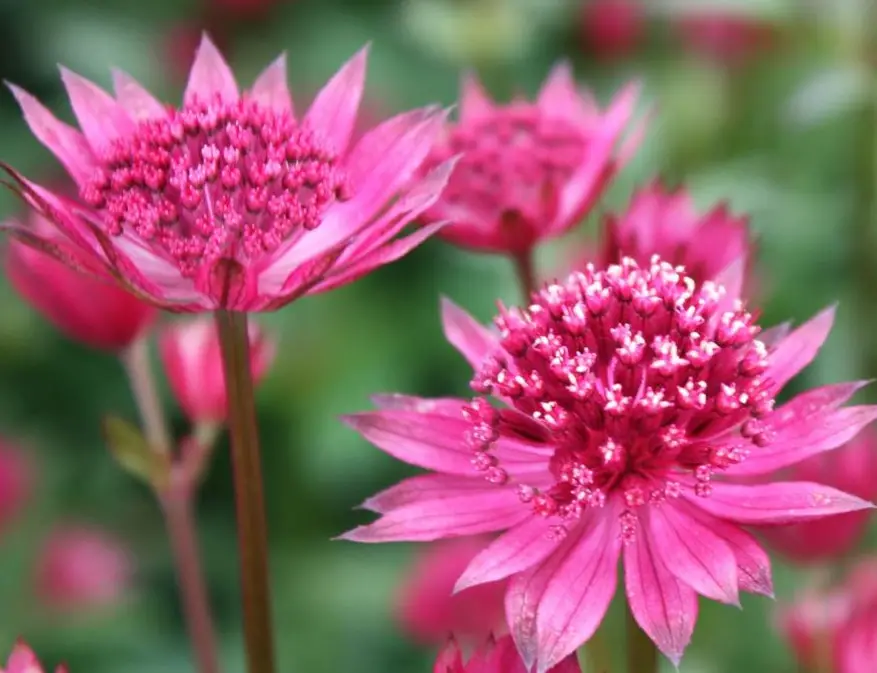
In pleasant contrast to the more conventional blossoms in the garden, astrantia, also known as masterwort, has a particular beauty with its pointed petals and pincushion-like look.
Growing in zones 4–9 in partial to full shade, this uncommon perennial has dancing petals that range in color from white to dark pink, typically surrounded by a bright pink core. Astrantia is a low-maintenance plant that can create a unique visual statement in any landscape with just periodic watering and weeding.
Gardeners looking to add something new and unusual to their floral arrangements will find it to be a great choice due to its tenacity and striking appearance.
Baptisia
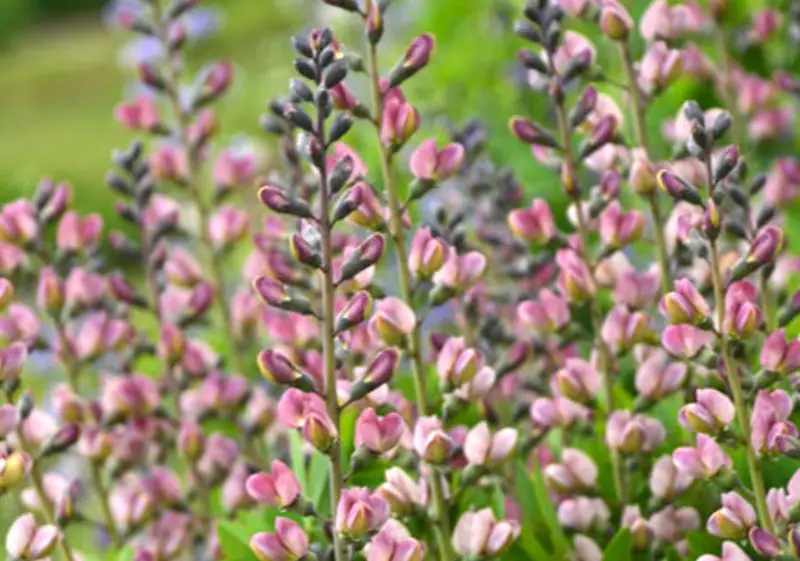
Known by many names, including false indigo, baptismisia gives gardens a wild, rustic character with its huge, shrub-like leaves and beautiful pink or lavender flowers.
This perennial, which is native to North America, grows best in zones 5–9 in full sun to light shade. Baptisia is a low-maintenance plant with a strong root structure that makes it resilient even in dry spells.
Bergenia
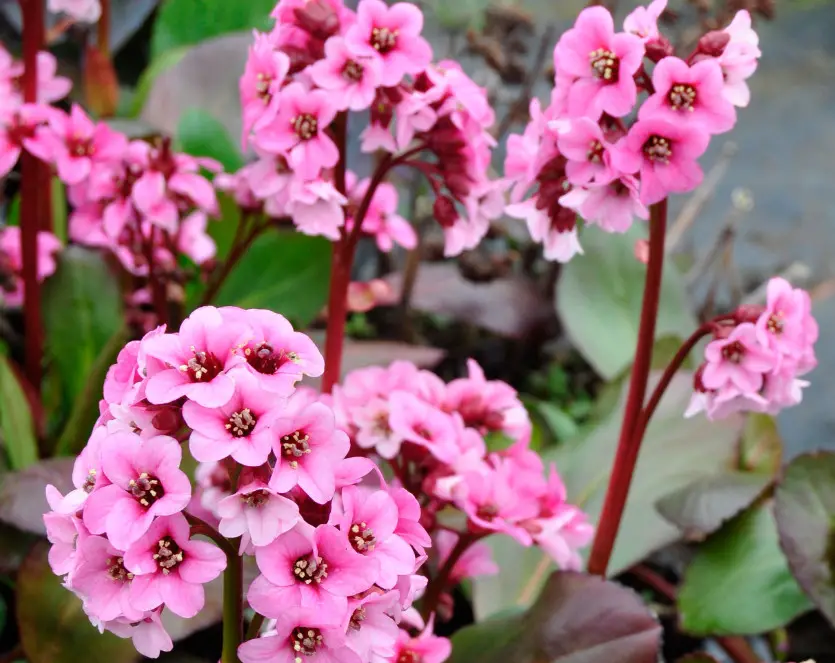
Bergenia adds a dramatic presence to any garden with its vivid pink blooms on sturdy branches and prominent leaves. Its modest stature guarantees it won’t be obscured, making it perfect for front-row placement.
This Asian perennial, which grows best in zones 5-8, needs lots of water and full to partial sun. In hotter regions, however, some shade may be helpful to keep the plant from withering on hot summer days.
Bleeding Hearts
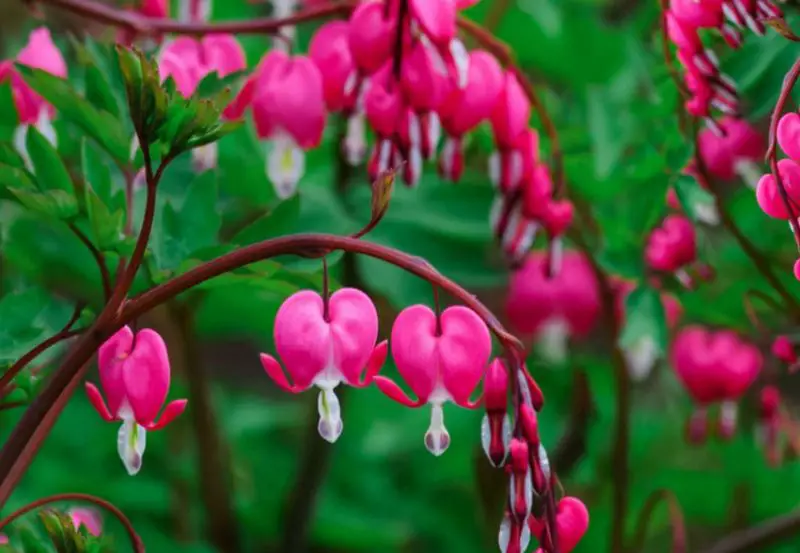
Scientifically referred to as Lamprocapnos spectabilis, bleeding hearts enthrall with their gracefully falling heart-shaped blossoms. These perennials, which are native to Northern Asia, prefer damp, fertile soil and flourish in the dappled shade of woods.
For a long-lasting show, plant bulbs in early spring or potted plants all through the growing season in zones 2–9. With the right maintenance, they can become durable additions to shadow gardens.
Buddleia
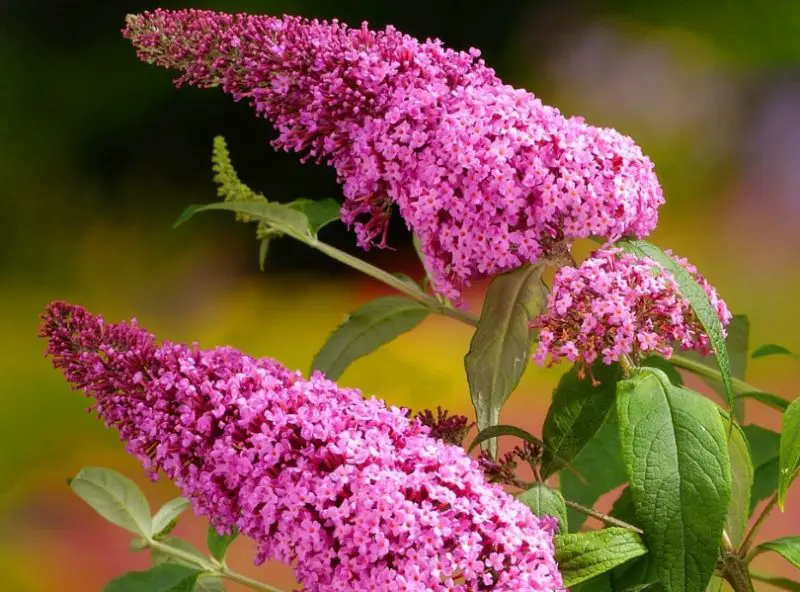
Buddleia, sometimes known as butterfly bush or summer lilac, is prized for its fragrant purple and pink blossoms that attract butterflies to gardens. This perennial, which is native to Africa, South America, North America, and Europe, grows best in full sun in zones 5 through 9.
It is a flexible and much-liked addition to any landscape because of its large growth potential, which allows it to function as a natural garden barrier as well as a lovely floral display.
Campion
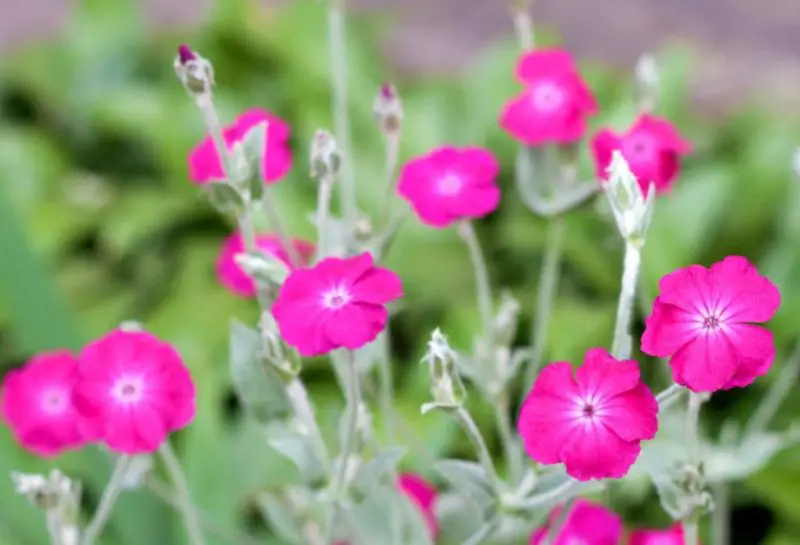
Campion, botanically termed Silene, has blossoms that resemble roses and frequently draw flies with its nectar. It is native to Southeastern Europe and grows in zones 4 through 10 in full to partial light.
Called catchfly, this short-lived perennial or biennial brings a flash of color to gardens in late spring or early summer with its vivid hot pink flowers, even if they are only there for a few short years.
Chrysanthemum
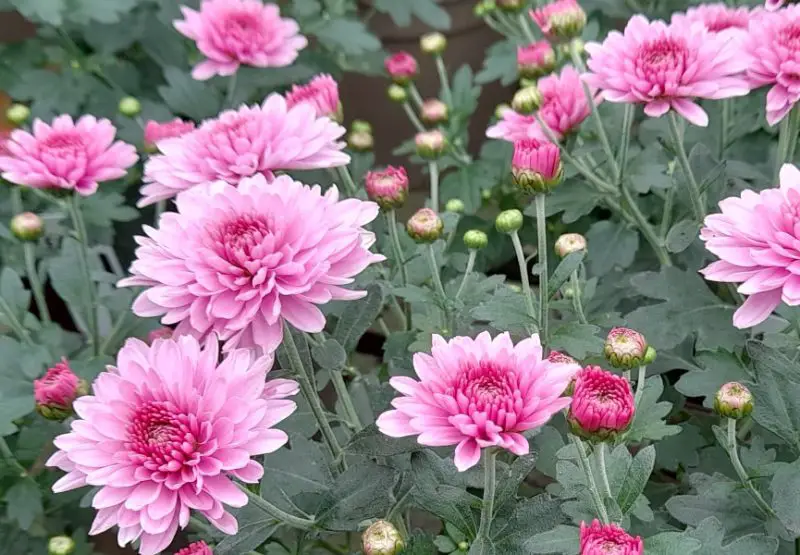
With their spherical blooms, chrysanthemums, often called mums, adorn gardens all throughout America. They originated in China and traveled centuries later to Europe and other parts of the world.
Renowned for their adaptability, these evergreens flourish in zones 5–9, providing a rainbow of hues in full sun to partial shade.
Well-liked as fall blossoms, they can last winter with proper care, though many people would rather display them in pots indoors throughout the colder months, bringing a touch of fall elegance to any area.
Coral Bells
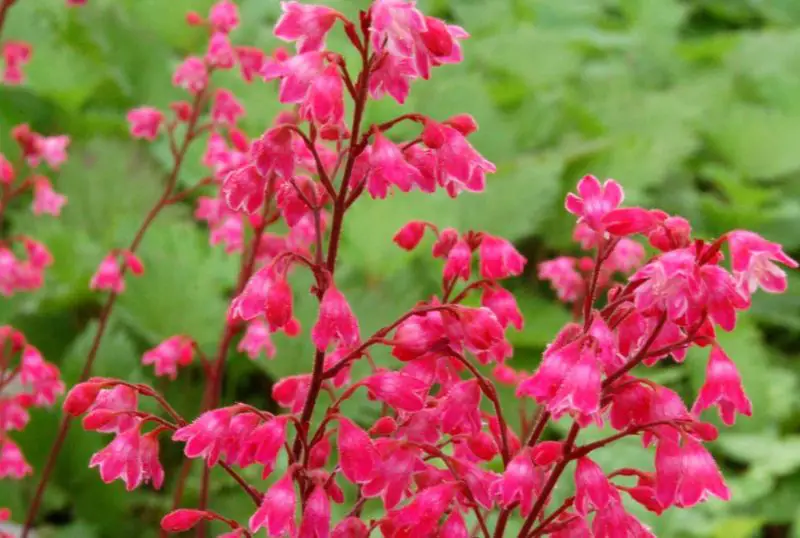
Coral bells, or Heuchera as they are formally called, are a hardy plant that can grow in a wide range of soil types and have leaves that range in color and texture from dark green to purple and black.
Deep pink blossoms on long stalks accentuate their ruffled or smooth foliage, which commands attention. Zones 3 through 9 are resilient, meaning they can survive a range of climate conditions, including drought and heavy rains.
Coral bells are a timeless beauty that work well in every setting, making them perfect for cold-hardy shade gardens.
Creeping Phlox
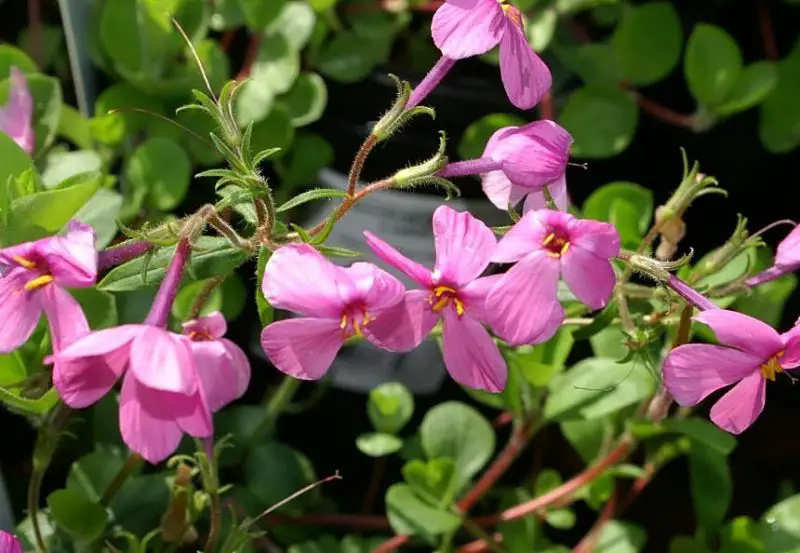
Although Phlox Stolonifera, often referred to as Creeping Phlox, may not have the most well-known name, its look certainly conveys a message. It grows best in zones 5–9 in full sun to light shade, and is perfect for creating a mystical carpet effect in gardens.
With its pink blossoms, this hardy perennial fills spaces like moss, flourishing even in clay or sandy soils, adding enchanting beauty wherever it grows.
Dahlia
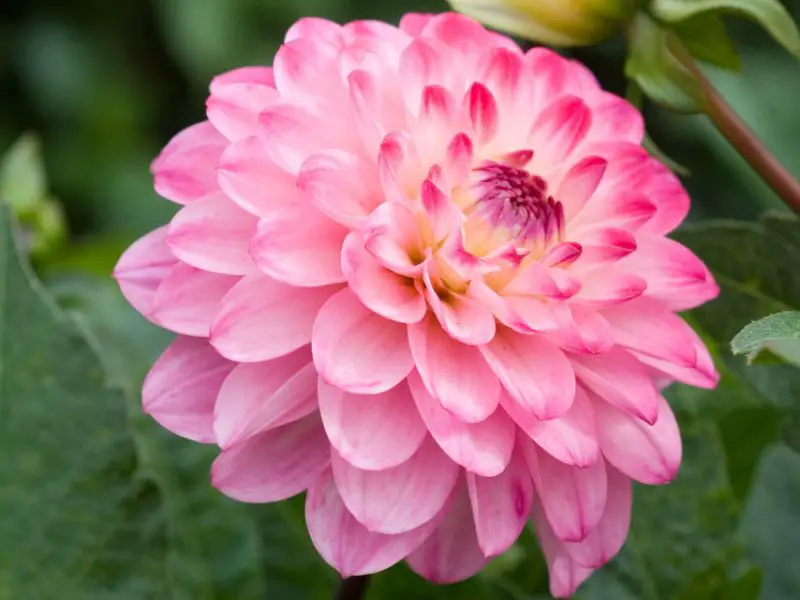
Mexico is the birthplace of dahlias, which enchant with their delicate petals that range in color from blush to hot pink. Growing well as perennials in zones 8–11, they can adapt to grow as annuals in zones 3–7.
They can be overwintered in a greenhouse or potted, even though they are not winter-hardy. The breathtaking dahlias are well worth the effort due to their unparalleled beauty, even with their care requirements.
Dianthus
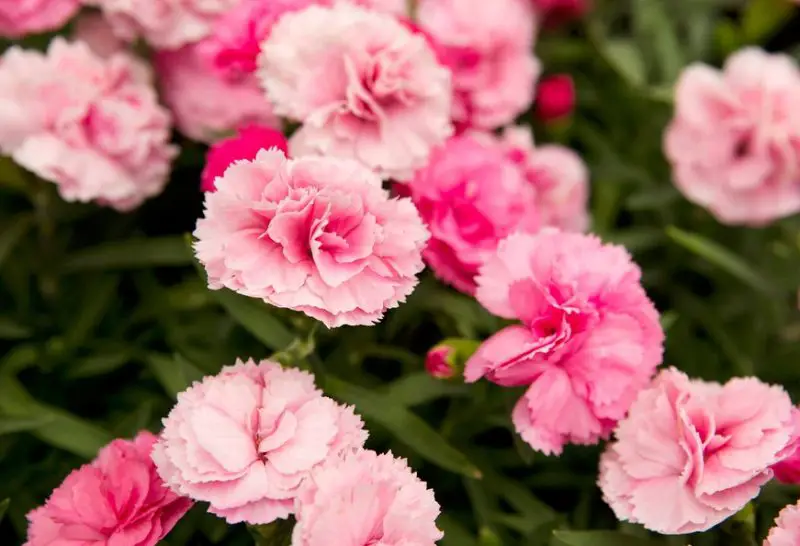
Dianthus is a European native that blooms in spring and early summer with brilliant pink and scarlet bunches. Some kinds have sporadic flowers that last until the late summer. Growing in zones 4–8, they do well in the edges and borders of gardens in full sun to light shade.
With the right care within its recommended climate range, dianthus, which is resilient to severe winters but sensitive to extreme heat, guarantees a vibrant display.
Forget-Me-Not
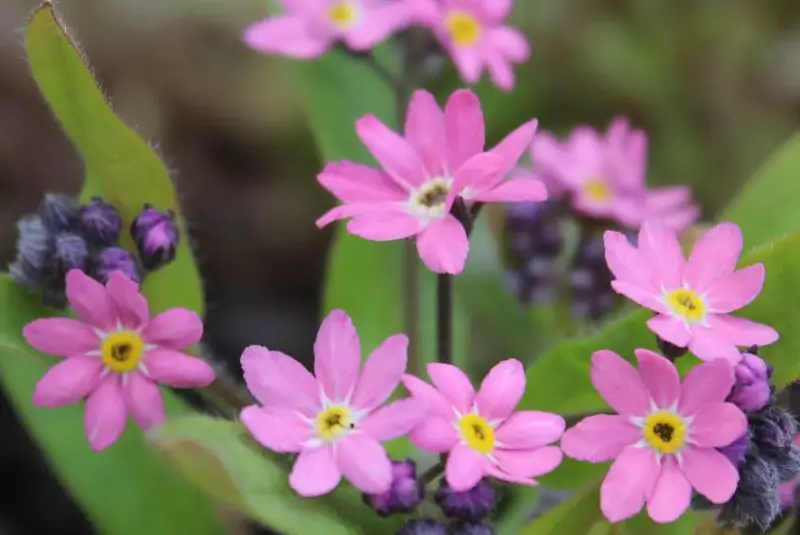
Scientifically called Myosotis, forget-me-nots are short-lived perennials or biennials that are native to North America and Europe. They favor zones 3–8, and they grow well in full sun to light shade. Though they are typically light blue, they can also be pale pink or purple.
Blooming from April to August, forget-me-nots offer a delightful, untamed touch to any garden with their ability to self-seed and adapt to a variety of conditions.
Foxglove
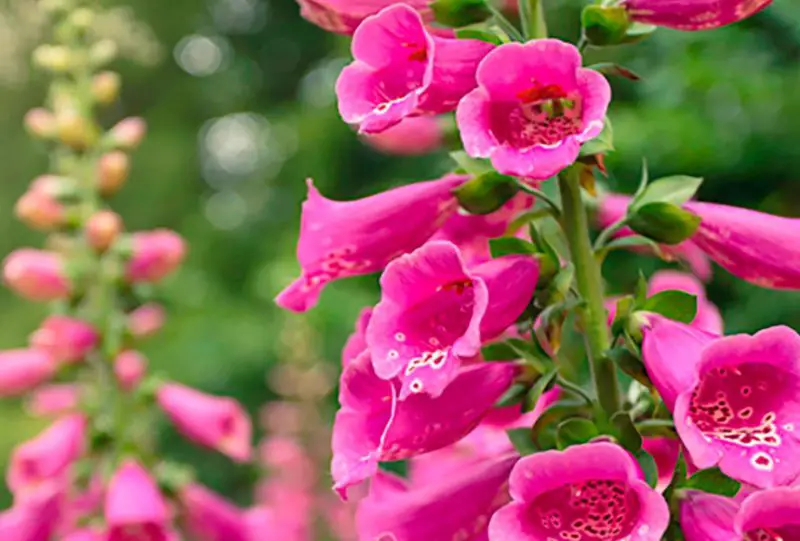
Digitalis, the scientific name for foxglove, is a traditional pink perennial that comes from Europe. It gives gardens appeal with its recognizable drooping blossoms on tall stalks.
It grows best in zones 3–8, blooms in the early summer, and enjoys moderate to full shade, depending on the amount of sunlight. Foxgloves are dangerous if consumed, especially by kids and cats, so use caution when handling them.
Hardy Hibiscus
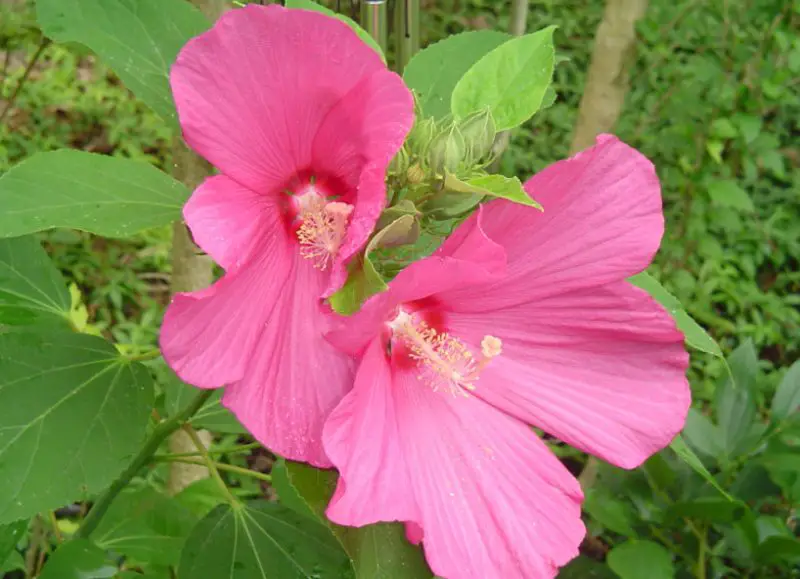
Scientifically known as Hibiscus moscheutos, the Hardy Hibiscus is a perennial plant native to Southern North America. This kind, which is appropriate for all-season settings, grows in zones 5-8, unlike its sibling in the tropics.
Its breathtaking pink blossoms, which flourish in full sun, give gardens an air of exotic elegance. They grow best in temperate climates with plenty of sunshine and room to spread out.
Helleborus

The distinctive perennial Helleborus, also called the Lenten rose, is native to Asia and Europe. Its small, squat shrubs have leathery leaves and big, dusty pink blossoms, unlike most garden flowers.
Helleborus thrives in zones 6 through 9, preferring moist soil with some shade. Although certain species may withstand colder temperatures, it’s best to check with nearby nurseries to find appropriate cultivars.
Hollyhocks
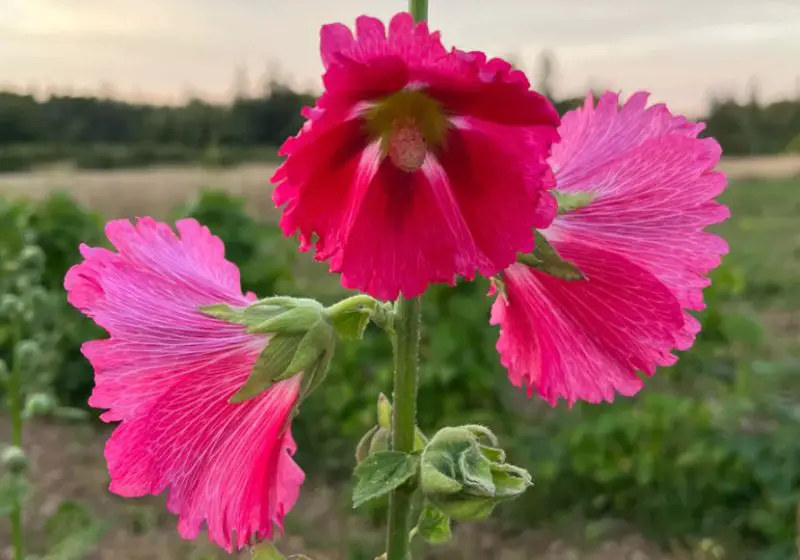
The vivid hues of hollyhocks, or Alcea as they are officially called, add beauty to cottage gardens. They provide a breathtaking sight in July when they bloom in tall spikes. They are difficult to grow, but their beauty is worth it.
They may tolerate partial shade, but they do best in zones 3-8 with well-drained, slightly acidic soil and plenty of sunshine. They are frequently found in double variety, which have two different colored blooms.
Hydrangea
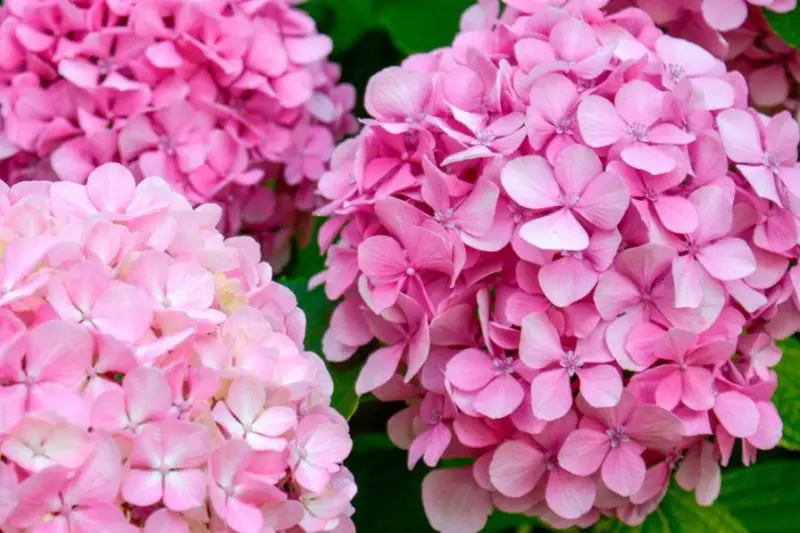
The distinctive characteristic of hydrangeas, which are perennial shrubs native to Asia and America, is that the pH of the soil affects the color of their blooms. They grow well in any acidity and, depending on the pH, bloom pink or purple.
They are tall and broad plants that grow well in zones 3–8, bearing little clusters of flowers in the early spring and summer. They can take some shade but they prefer the full sun.
Hyssop

Scientifically called Hyssopus officinalis, hyssop is a perennial herb with a versatile use that comes from Europe. In addition to its therapeutic benefits as a throat relaxant and cough suppressor, it enhances the appearance of the landscape with its late summer blooms of pale pink to purple blossoms.
Although it may be grown as an annual elsewhere, it thrives in zones 4–8. Hyssop blends in well with other plants and adds a lovely fragrance to any garden. It blooms in the late season.
Knock-Out Roses
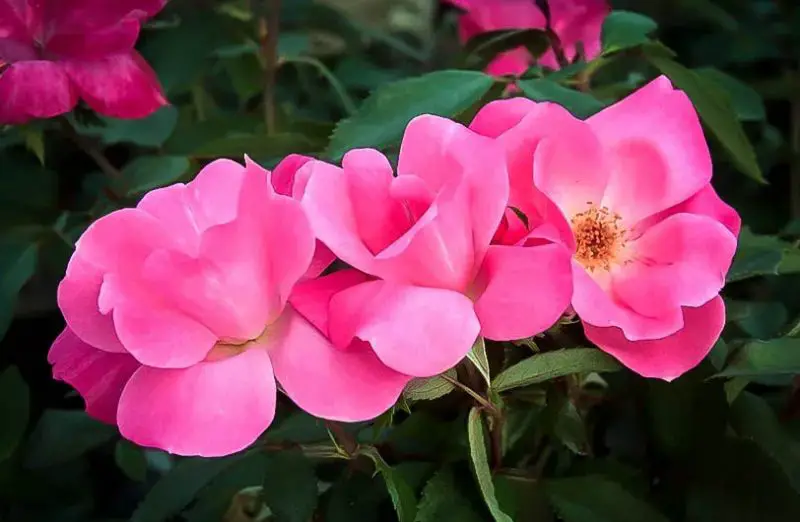
Native to North America, Knock-Out Roses, or Rosa ‘Knock Out’ as they are formally called, are perennial shrubs. Knock-Out Roses are well known for their low maintenance and disease resistance, although rose varietals differ in terms of sun and care requirements.
They need five to eight hours of sunlight per day in order to thrive in zones 5 through 11. They come in a variety of hues, including pink, and are a great option for chilly climes.
Speedwell
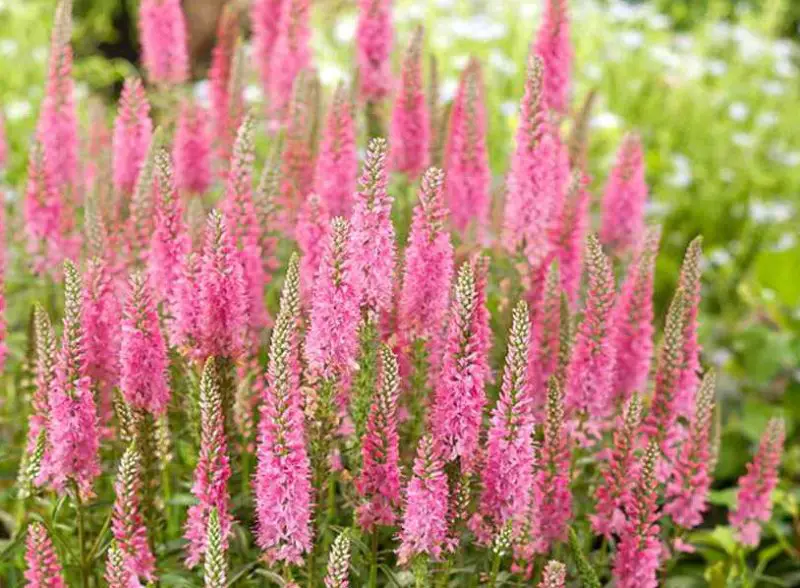
Hardy perennial Veronica thrives in zones 3 through 9, making it a beautiful decorative plant for gardens. It can grow up to three feet tall and is tolerant of both full sun and partial shade, which makes it perfect for use as a backdrop in a garden or mixed in with shorter, darker plants.
Tiny flowers adorn the drought-tolerant, visually arresting conical stalks of Veronica, demonstrating its low-maintenance yet eye-catching qualities.
Tulips

The flower of spring, tulips grow best in zones 3–8, and they represent the essence of Holland’s floral history. Planting tulip bulbs is a ritual that gardeners look forward to every spring, when they will see a riot of color, including that beloved pink variety.
Though they can withstand the sun or some shade, tulips need the ideal amount of light to protect them from the sun’s rays. This way, their graceful flowers will always add a touch of elegance to landscapes.
Yarrow
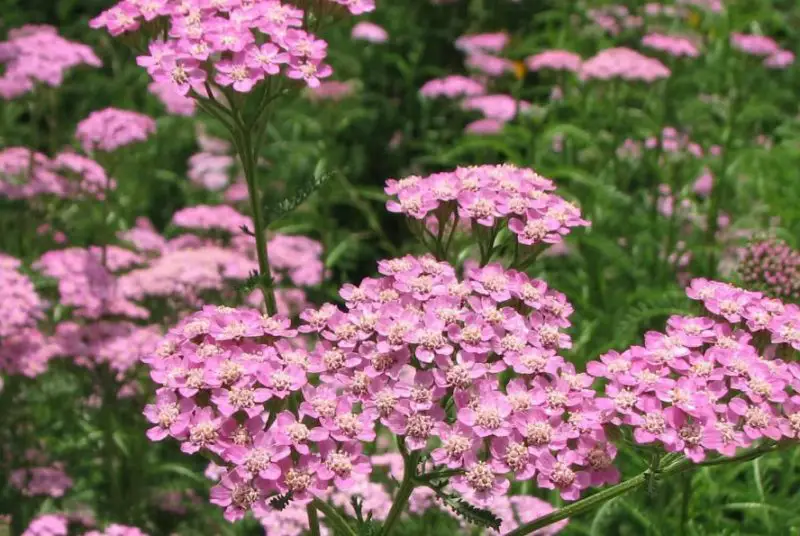
Yarrow, which represents adaptability and resiliency, flourishes in zones 3 through 7. Gardeners can use this drought-tolerant perennial to add color and brightness to desert areas. It comes in a variety of colors, including the popular pink.
Yarrow is a hardy plant that may cover the ground in a rich carpet of color, and it prefers full sun to light shade. Gardeners looking for a lovely, hardy ground cover or accent plant will find it indispensable due to its adaptability to a wide range of climates, even beyond its normal zones.
Impatiens
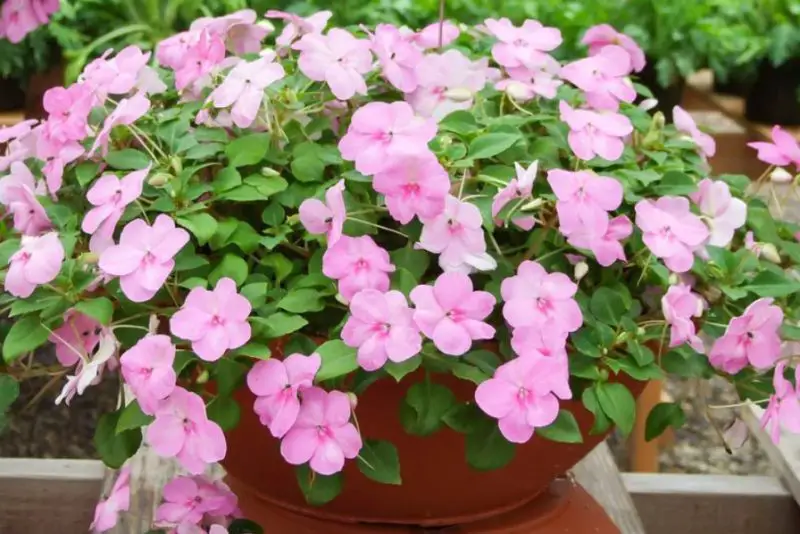
Known for their vivid flowers, impatiens are sometimes considered annuals but can return as perennials in zones 10–11. They grow well in zones 2 through 11 in a variety of settings, including gardens and pots.
Make sure there is enough shade for perpetual growth. Blooming throughout the summer, their hues ranging from pink blush to rich magenta, bring vibrancy to any garden.
Lily of the Valley

Convallaria majalis, the scientific name for lily of the valley, is a plant that grows well in zones 2 through 9 in most of North America. It enjoys partial or full shade, with delicate, tiny blooms on sensitive green stalks.
On the other hand, the pink variety can withstand full daylight, blossoms early, and grows to a maximum height of eight inches. Lily of the Valley is a delightful addition to shady settings, adding elegance with its delicate blossoms.
Lupine
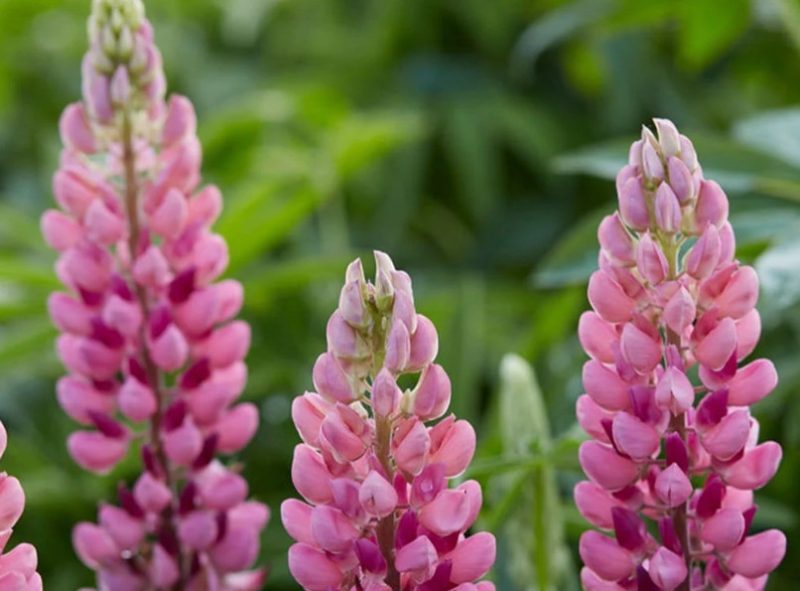
The genus Lupinus includes the lupine, which is characterized by stacking clusters of tiny blooms on tall stems. They thrive in zones 4–8, adapting to many environments. They are native to the Mediterranean region and like bright, well-drained soil.
Usually blue or purple, lupines bring a wild beauty to gardens where they thrive unrestrained, particularly naturalistic gardens.
Achimenes
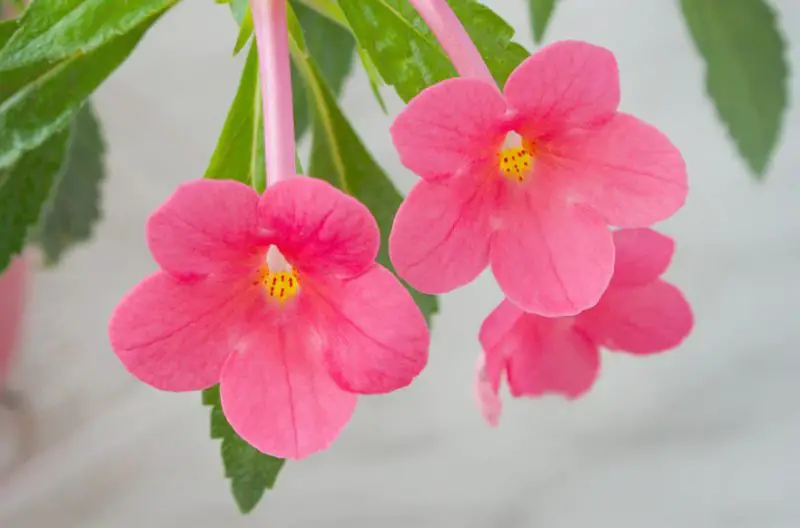
Achimenes longiflora, also hailed as cupid’s bow, thrives in the warmth of zones 10-11. Originating from Central and South America, it prefers the dappled light of partial to full shade. Remarkable for its vibrant purple hues, the plant also surprises with stunning light pink varieties.
As a relative of the African violet, it demands similar care, flourishing in warmer climates or as a tender annual elsewhere, with tubers replanted each season for continuous beauty.
Amarcrinum
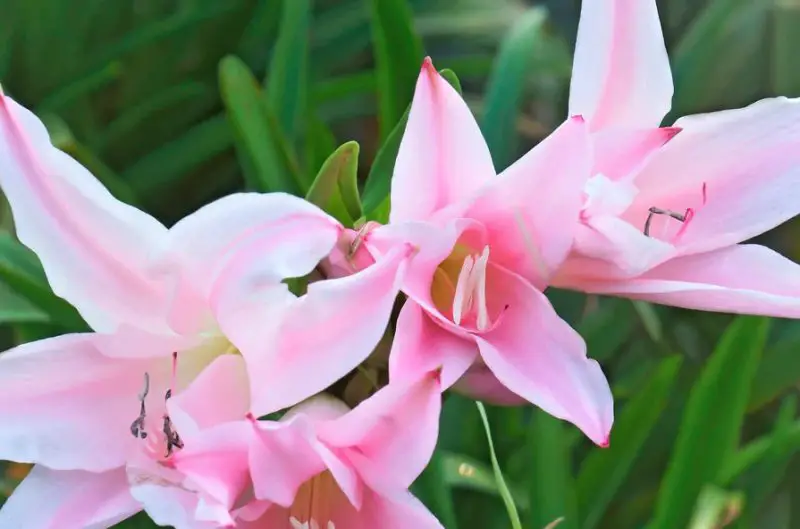
Amarcrinum, a striking blend of amaryllis and crinum, offers gardeners a robust, pale pink bloom that bridges the gap between the amaryllis’s delicate charm and the crinum’s resilience. Thriving in zones 8-10, this hybrid marvels with lily-like flowers throughout the summer, surpassing typical winters with ease.
Perfect for those seeking longevity and strength in their garden, Amarcrinum embodies the best of both parents, flourishing in full sun to partial shade. Whether perennial in warmer zones or an annual in cooler climates, it promises a spectacular display in a range of settings.
Anemone
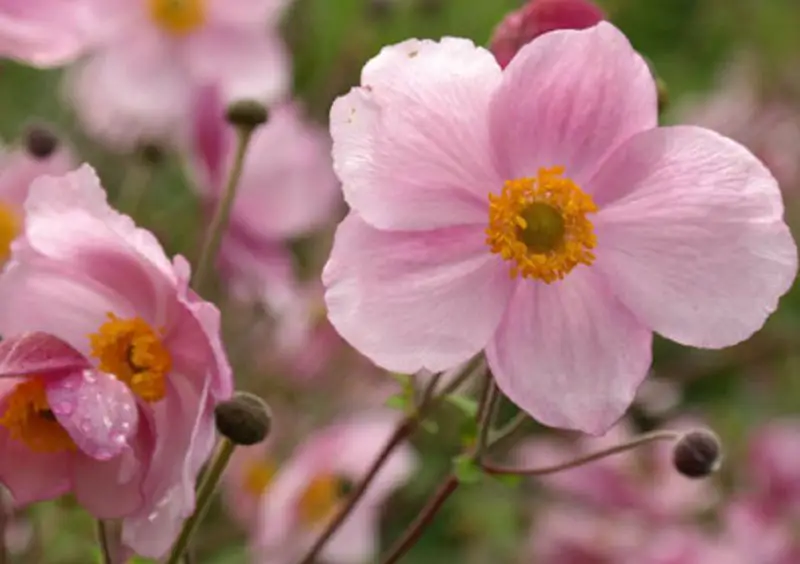
Anemones, with their diverse array, adorn gardens from zones 3-7, flourishing under various light conditions. These perennials, particularly the Japanese anemone, evolve into bush-like splendors, offering a palette of pink among other hues.
Ideal for gardeners seeking low-maintenance beauty, anemones adapt to their environment, preferring light shade in warmth and more sun in cooler realms. Prior to planting, a little research on the specific variety can ensure these stunning blooms reach their full potential, enhancing any garden with their delicate yet resilient charm.
Anise Hyssop
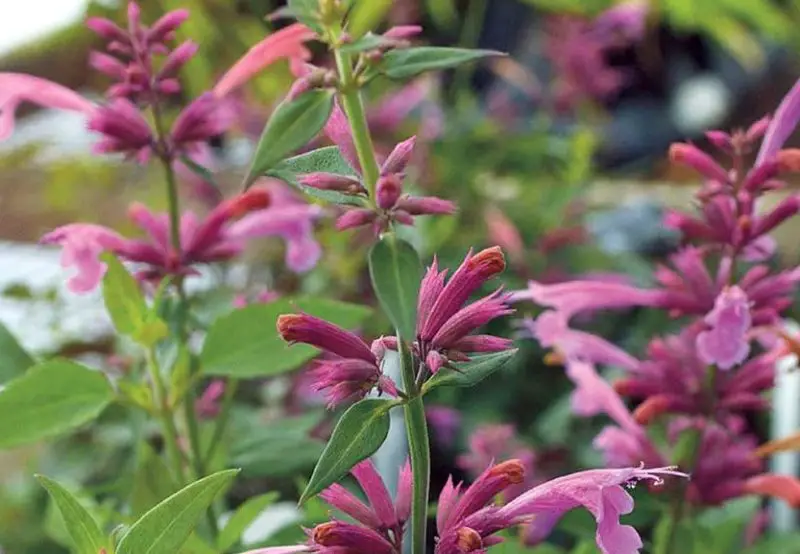
It grows best in zones 4–8, Anise hyssop, or Agastache foeniculum, is a hardy jewel native to northern meadows. Gardens with tall, stately flowers are brightened by the lovely smell emanating from their lavender to pink petals.
This short-lived perennial can grow up to four feet tall and extend its roots widely. It thrives in partial to full sun. Though intriguing, self-seeding will take some work to keep it from taking over your garden.
Antirrhinum
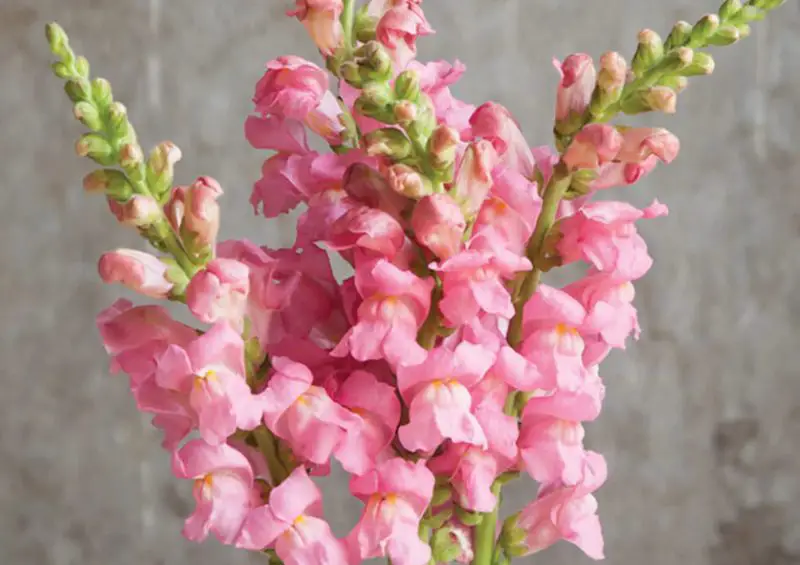
Snapdragon, also known as antirrhinum, is a flower that blooms brightly all throughout North America, a sign of its Mediterranean origins. These perennials, which thrive in zones 7–11, prefer the cooler climates more similar to their alpine beginnings.
In particular, the pink varieties, called Antirrhinum majus, provide an early splash of color that heralds the approach of spring. Snapdragons are a great option for gardeners looking to add a pop of pink beauty to their floral displays that will come back every year. They are versatile as annuals and enchant well into the summer.
Aster

Asters are a beautiful addition to gardens in zones 3–8 because of their vivid range from purple to pastel pink. These perennials, which are native to Asia and Europe, have adapted to a variety of climates and thrive in bright light.
With more than 170 species, gardeners can select small forms for front displays or tall variations perfect for back borders. As long as they receive full to partial sun, asters are a resilient and diversified plant that can be used in any type of garden. For asters to work well as bushy ground cover or as a focal point in your garden design, careful selection is essential.
Lychnis Coronaria
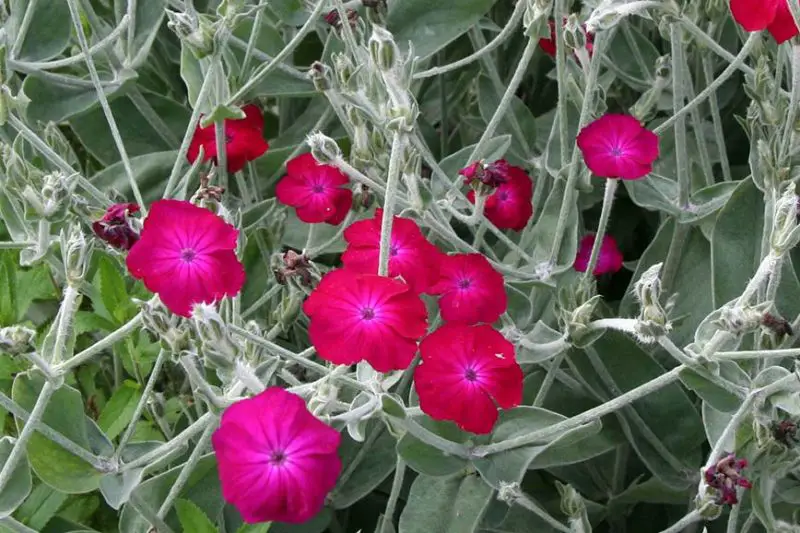
Another name for gardener’s world, or hardier campion, is Lychnis coronaria. Bright pink blooms adorn its green-gray stalks, making it a charming addition to gardens.
Its lifespan is only three to four years, although it can live longer with regular deadheading and winter pruning. Being an evergreen, it grows best in zones 3–8, enjoying full to partial light. This plant looks great in any kind of garden.
Obedient Plant
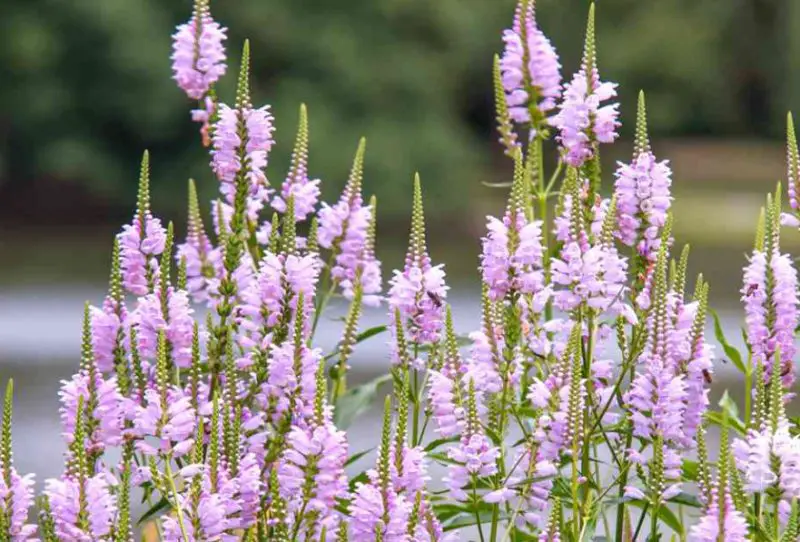
For inexperienced gardeners, Physostegia virginiana, often known as the Obedient Plant, is a hassle-free option. It lives up to its name, needing little maintenance and growing submissively when given food and water.
With bell-shaped flowers and square stems, it can withstand a range of climates and grows in zones 3 through 9. Full sun is ideal for blossoming, producing dainty pink flowers.
Oriental Lilies
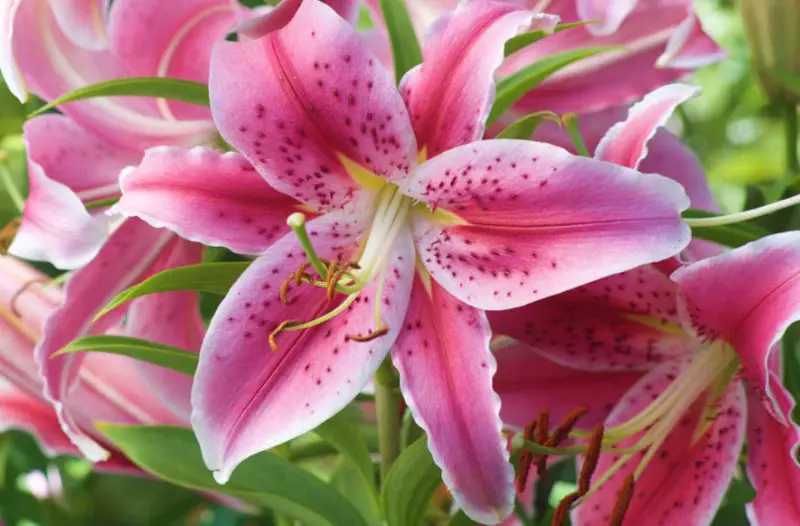
Oriental Lilies, or Lilium orientalis in scientific parlance, are distinguished by their vivid pink petals that are frequently rimmed with white. Often called “Stargazer lilies,” they grow well in zones 4 through 9, though in colder climates, they need a lot of mulch.
They can tolerate little shade, but they prefer full sun, especially during the hot summer months. These eye-catching blossoms provide any garden with a vibrant burst of color.
Peonies
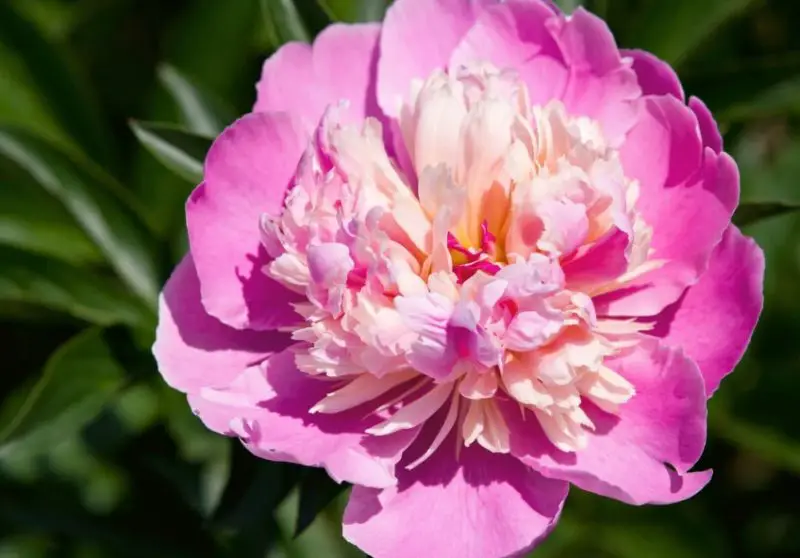
The scientific name for peonies is Paeonia, and they represent the spirit of summer. These perennial plants grow best in full sun to medium shade and are found in zones 3–8. Peonies are well-known for their enormous, luxuriant blooms that gently droop, dropping petals in a show of careless beauty.
They also attract a wide range of insects, which increases the biodiversity of gardens. Their thin, sometimes leafy branches support the magnificent blossoms, lending grace and a hint of untamed nature to any garden arrangement.
Prunella
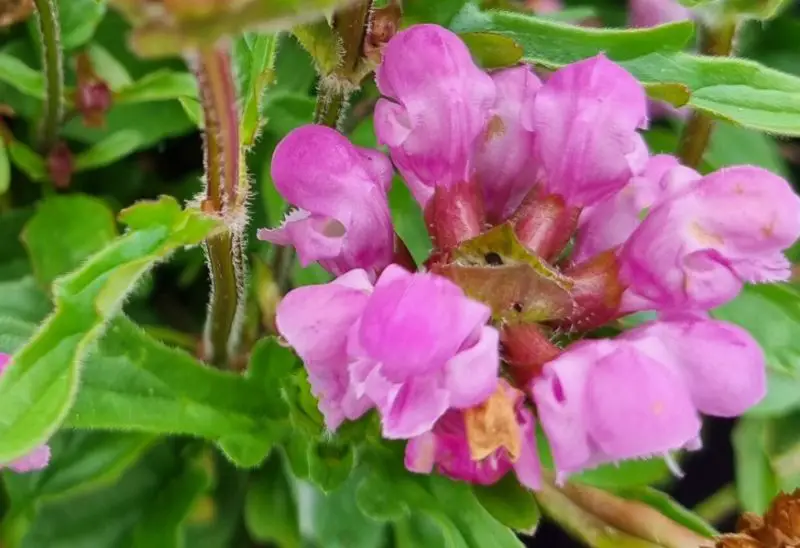
Grows well in zones 4–8, full sun to partial shade. Prunella Grandiflora is a pretty pink variation of the usually purple and blue wildflower. Careful bioengineering produced this low-maintenance perennial that requires little watering, yet avoids overwatering to avoid root drowning.
Some refer to it as a weed because of how resilient and adaptable it is, making it a prolific grower. Its great beauty does, however, serve as a caution that it may spread rapidly over your garden.
Rose of Sharon

Growing in zones 5–9, Hibiscus Syriacus is the Rose of Sharon, blooming late summer after many others have faded. Similar to hibiscus, this perennial shrub has a fuller petal display and tolerates a range of solar exposures.
To ensure a brilliant display of hues ranging from white to deep magenta, gardens require care that consists of deep, sparing watering and plenty of growing space. This prolongs the beauty of the gardens.






